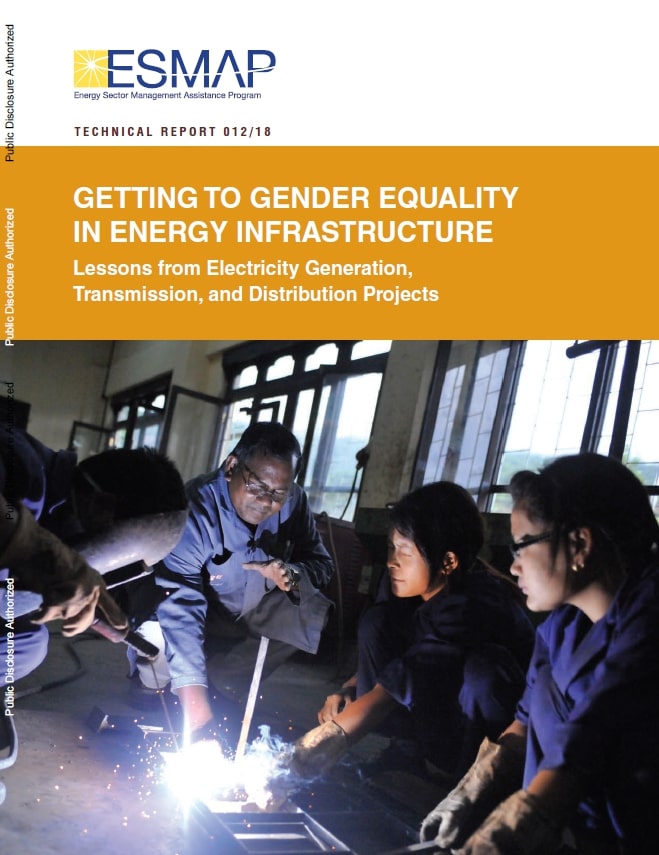Getting to gender equality in energy infrastructure
 |
Atteindre l'égalité femme-homme dans les infrastructures énergétiques
Lessons fron Electricity Generation, Transmission, and Distribution Projects
report Jan 2018 ; 173 pages
Aut. Nicolina Angelou & Vanessa Lopes Janik & Norma Adams & Maria Beatriz Orlando & Pranav Vaidya & Ieva Zumbyte
Ed. ESMAP - Washington World Bank - Washington
Downloadable format: PdF
Downloadable from the publisher
Editor Presentation
Abstract:
This study’s objective is to examine the social and gender footprint of large-scale electricity generation, transmission, and distribution projects to establish a foundation on which further research and replication of good practices can be built. Specific objectives were to examine key gender impact pathways of energy infrastructure projects in the affected communities, identify entry points for actions to ensure gender-equal project outcomes, and build an evidence base through primary and secondary data collection and analysis using a gender lens. In the past, such projects often considered gender dimensions marginal to the main technical work which hindered their effectiveness and sustainability. Contents:
OVERVIEW p.1
ENERGY INFRASTRUCTURE AND EMPLOYMENT: HOW DO WOMEN BENEFIT? p.17
LAND-RELATED IMPACTS OF ENERGY INFRASTRUCTURE: DISPLACEMENT AND COMPENSATION p.37
RISK PREVENTION AND ENHANCING POSITIVE SOCIAL IMPACTS p.55
THE ROLE OF ENERGY UTILITIES AND BUSINESSES p.73
CONCLUSION AND RECOMMENDATIONS p.87
Target Audiences:
Keyword: |
Countries: |
Morocco (CI) (DT) (ET) , Nepal (CI) (DT) (ET) , Senegal (CI) (DT) (ET) |
Publishers/Broadcasters: |
|
ESMAP
-
Energy Sector Management Assistance Program - Washington - Usa |
World Bank - Washington - Usa |
If there is a broken link, we will be pleased to receive a message: communication@pseau.org